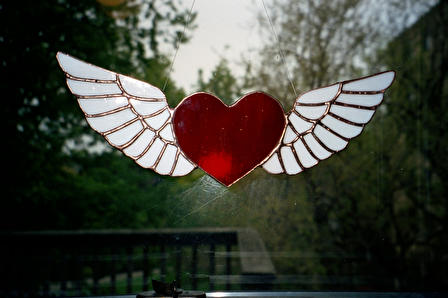 |
| Edward Hopper, Girl at a Sewing Machine |
Girl at Sewing Machine
(after a painting by Edward Hopper)Mary Leader
It must be warm in the room, walls the color of over-steeped tea,
the sun high,
coating the yellow brick exterior of the apartment building,
angling in on
the girl, stripped down to camisole and petticoat, sewing.
She's a busty girl,
soft, no doubt perspiring, slippery under her breasts, moisture
trapped on the back
of her neck under all that chestnut hair. She doesn't notice,
though; you can see
she's intent on her seam. She doesn't slump over the machine
but bends from the hip,
her body as attuned as her hands. Her feet, though not shown
in the painting,
are bound to be pudgy, are probably bare, pumping the treadle
ka-chunk ka-chunk ka-chunk
but that's unconscious. Her point of concentration is the needle,
silver, quick,
its chick chick chick chick chick, necessity to keep the material
in perfect position,
position. What is she making? The fabric looks heavy and yet
billowy, like
whipped cream, or cumulus clouds; certain girls, while large, move
with grace (when nobody's
there) but in public, conceal, or try to conceal, their bodies
beneath long clothes.
They favor long hair, feeling it wimples and veils embarrassment.
Yes, I know this girl.
Only in her room, only when unseen, can she relax at all, peel off
a hot blouse,
a brown skirt, like the one heaped on her bed in the background,
take pleasure in
a good hairbrush, the bottle of scent on the dresser, the picture
of her own choosing
on the wall. Whatever she's making--let's go ahead and say it's
a dress for herself--
she is not, as you might think, dreaming of a party, a dance,
or a wedding. No, she's
deciding to flat-fell that seam--time-consuming, but worth it--
stronger, better-looking.
I'm sure she knows by now not to expect much attention from boys.
She's what? twenty?
eighteen? She will, in time, use many words to describe herself,
not all of them bad;
but not once will one of them be "pretty," or "lovely." Those
aren't for a fat girl
though she can take a mass of cloth, and a cast-iron machine,
and make a beautiful shape.
I heard this poem on Garrison Keilor's The Writer's Almanac quite a while ago and just discovered the painting on Pinterest. I thought they would go together well without realizing that the painting was the inspiration for the poem. Thanks to the internet, they are together here!



